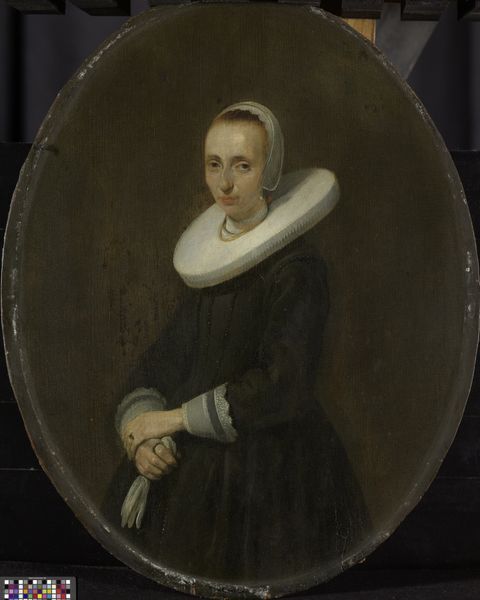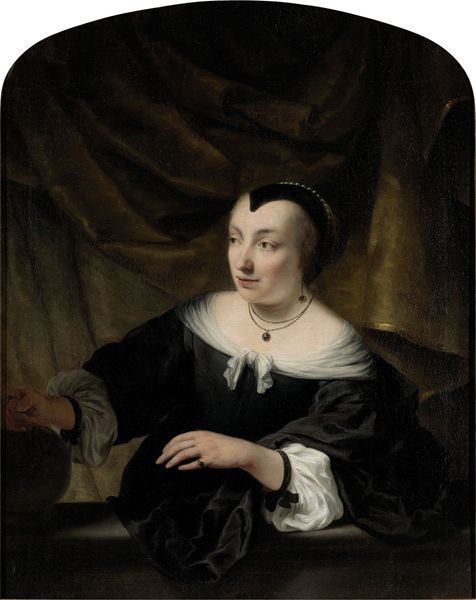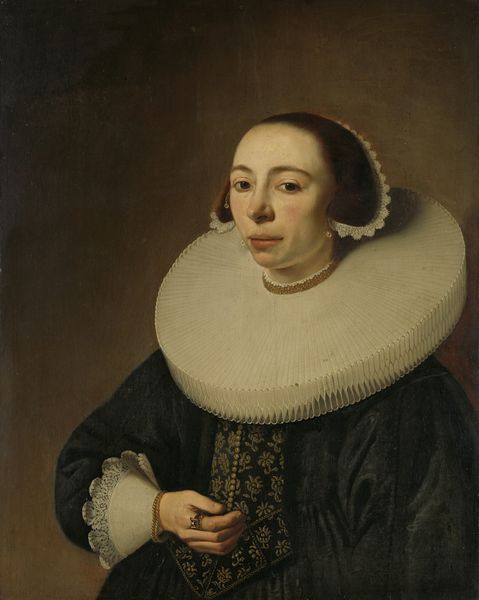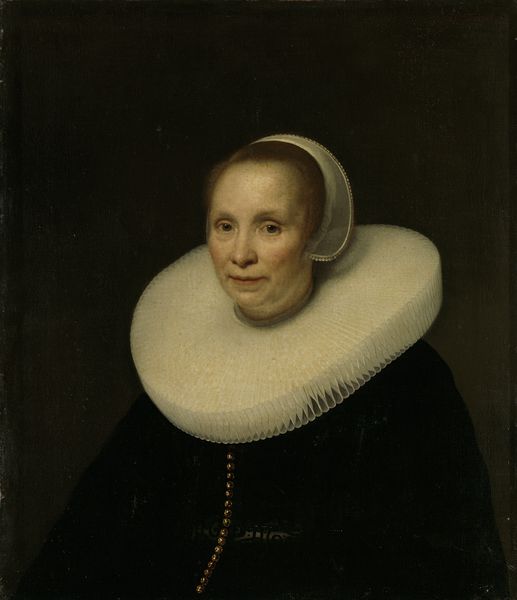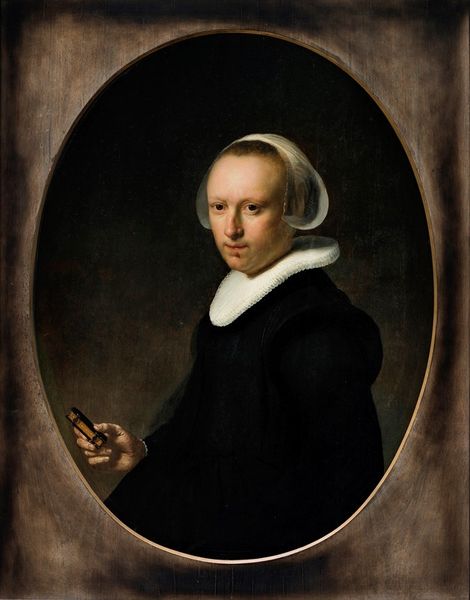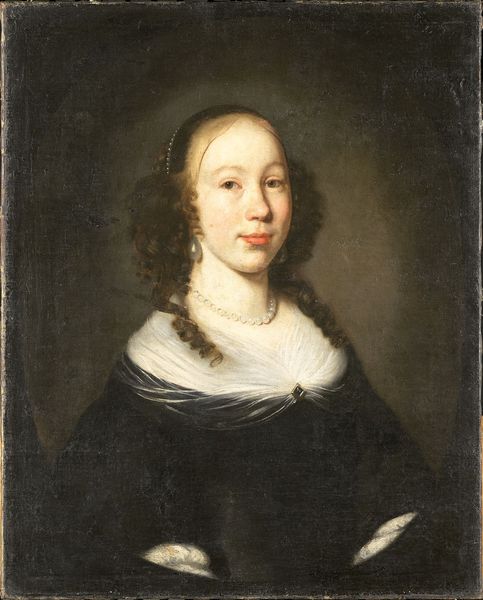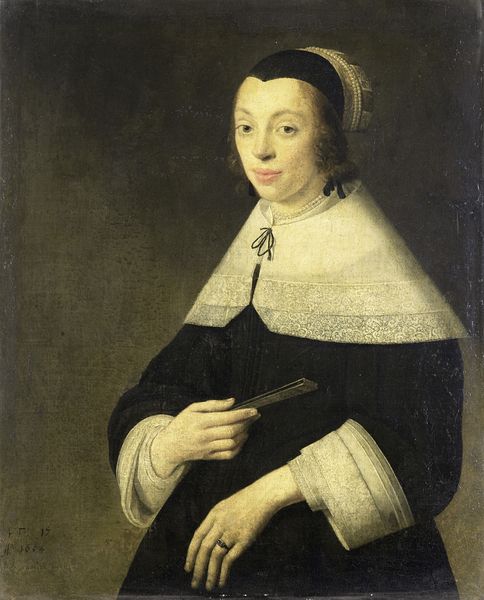
painting, oil-paint
#
portrait
#
character portrait
#
baroque
#
dutch-golden-age
#
painting
#
oil-paint
#
portrait subject
#
portrait reference
#
portrait head and shoulder
#
portrait drawing
#
genre-painting
#
facial portrait
#
portrait art
#
portrait character photography
#
fine art portrait
#
celebrity portrait
Dimensions: height 93 cm, width 73 cm, depth 10 cm
Copyright: Rijks Museum: Open Domain
Editor: Here we have Jacob Backer's "Portrait of Sara de Bie," painted sometime between 1638 and 1651. It's oil on panel. What strikes me is how straightforward and seemingly unadorned this portrayal is, especially compared to some more elaborate Baroque portraits. What stands out to you when you look at it? Curator: The very restraint you note speaks volumes about the social and cultural values of the time, especially within the rising Dutch merchant class. This isn’t aristocratic ostentation; it is a representation of civic virtue. Consider the sitter’s modest attire, the dark palette. What does that suggest to you about her societal role and status? Editor: It suggests a certain practicality, maybe even a deliberate rejection of excessive display. The hands, so prominently placed, with that single ring, could point to domestic responsibility and marital status, perhaps? Curator: Precisely! Backer, working in Amsterdam during the Dutch Golden Age, understood his market. Commissions like these celebrated a new kind of power – the power of trade, family, and community. Her gaze is direct, confident but not confrontational. Does that alter your impression of “unadorned”? Editor: It does. Now that you point it out, it feels less like simplicity and more like a quiet assertion of self. The dark clothes frame her face and hands beautifully. Curator: The darkness throws the light towards those focal points to communicate identity without explicit symbols of wealth. These portraits helped families construct and broadcast a specific public image, reflecting their aspirations and values. What have you taken away from analyzing Backer’s choices here? Editor: It really highlights how art, even portraiture, is deeply embedded in social and economic systems, constructing images that reinforced specific values for a particular audience. The sitter's "simplicity" conveys status in its own way. Curator: Exactly. By studying how artists and patrons navigated these dynamics, we gain richer understanding of the past, as well as the forces that continue to shape our present.
Comments
rijksmuseum about 2 years ago
⋮
The esteemed portraitist Backer painted this likeness of Lutma’s wife as a pendant to that of the silversmith himself. Few artists had themselves portrayed like this, together with their spouse. Johannes Lutma clearly aspired to an elevated social status. Not just for himself, but also for the art he practised.
Join the conversation
Join millions of artists and users on Artera today and experience the ultimate creative platform.


